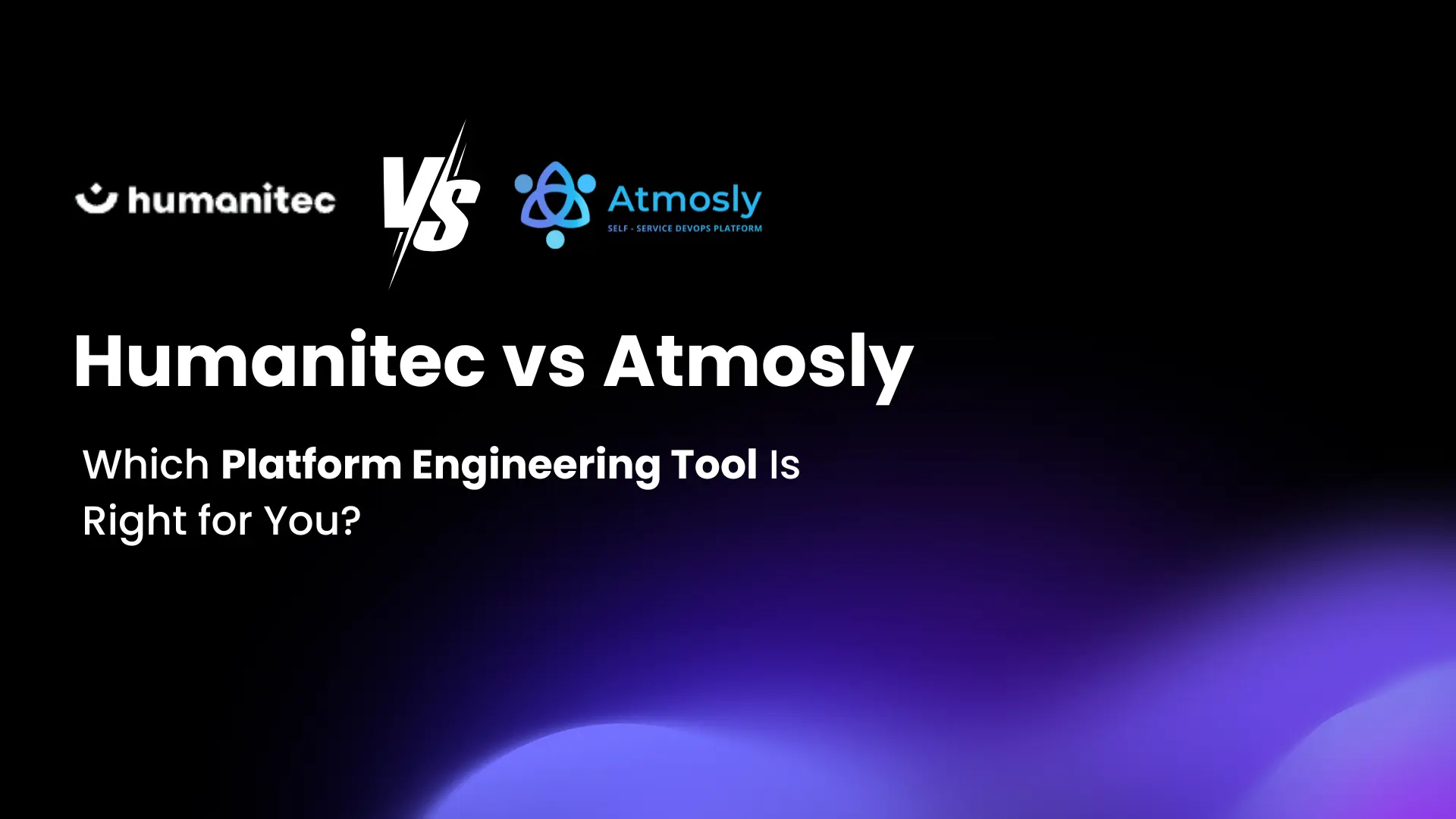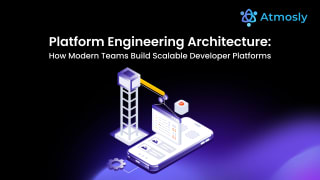As developer velocity becomes a top priority for modern engineering organizations, Platform Engineering tools like Humanitec and Atmosly are gaining serious traction. Both platforms aim to enable internal developer platforms (IDPs), reduce DevOps overhead, and create golden paths for software delivery but they do so in very different ways.
If you're trying to decide between Humanitec and Atmosly, this article provides a side-by-side analysis of their core features, automation capabilities, GitOps workflows, use cases, and pricing models. Let’s help you choose the platform that fits your team’s stage, technical maturity, and DevOps goals.
Overview: Humanitec vs Atmosly at a Glance
| Feature | Humanitec | Atmosly |
|---|---|---|
| Platform Type | Platform Orchestrator | Full-Stack IDP Automation |
| GitOps Native | Partially supported | Fully GitOps-native |
| CI/CD Automation | External integrations | Built-in pipelines |
| Environment Provisioning | Dynamic with APIs | Ephemeral + persistent templates |
| Secrets Management | External (Vault, etc.) | Built-in secrets engine |
| Developer Experience | API-focused | Git-first + API/CLI |
| Self-Service UX | Requires custom portal or integrations | Prebuilt golden path templates |
| Ideal Team | Enterprise platform teams | Scaling DevOps & product teams |
What Is Humanitec?
Humanitec is an enterprise-grade platform orchestration tool that enables DevOps and platform teams to abstract infrastructure complexity away from developers. It provides APIs and a dynamic configuration engine to manage deployments, environments, and workload orchestration.
Key Capabilities:
- Dynamic environment creation through declarative APIs
- Integration with Kubernetes, Terraform, ArgoCD, and more
- Workload orchestration via score-based configuration resolution
- Policy-based guardrails and compliance enforcement
- Infrastructure agnostic (cloud or on-prem)
Strengths:
- Offers powerful infrastructure abstraction for large teams
- Focused on control, standardization, and enterprise governance
- Suited for regulated or high-scale environments
Limitations:
- Requires deep infra understanding for setup
- Lacks built-in CI/CD; relies on 3rd party integrations
- No visual developer portal; APIs must be integrated into another UI
What Is Atmosly?
Atmosly is a modern platform engineering solution designed to unify GitOps, CI/CD, environment provisioning, and secrets management into a seamless developer-first platform. It enables companies to build internal developer platforms that are easy to scale and adopt across product teams.
Key Capabilities:
- GitOps-native deployments with version control and drift rollback
- Built-in CI/CD engine (supporting GitHub Actions, GitLab, Bitbucket)
- Automated environment provisioning (ephemeral and persistent)
- Built-in secrets vault with RBAC and policy control
- Preconfigured golden path templates for developer onboarding
Strengths:
- Easy to set up, scale, and use
- End-to-end DevOps automation with no extra tooling required
- Built for platform engineering teams looking to enable developer self-service fast
Limitations:
- Less flexible for ultra-complex or highly regulated workflows
GitOps-centric model assumes some developer familiarity with Git workflows
Side-by-Side Comparison
1. GitOps Integration
- Humanitec supports GitOps through ArgoCD or other CD tools, but it's optional.
- Atmosly is GitOps-native—every environment, deployment, and config lives in Git.
✅ Verdict: Atmosly provides a stronger GitOps foundation out of the box.
2. CI/CD Automation
- Humanitec depends on existing CI/CD tooling (e.g., Jenkins, CircleCI) and requires API orchestration.
- Atmosly includes built-in CI/CD orchestration, removing external dependencies.
✅ Verdict: Atmosly wins for teams that want built-in pipeline automation.
3. Environment Management
- Humanitec allows dynamic environments via APIs but requires backend infra configuration.
- Atmosly lets developers spin up preview, QA, or staging environments from templates with a Git push or API call.
✅ Verdict: Atmosly is easier and faster for provisioning self-service environments.
4. Secrets & Config Management
- Humanitec integrates with external tools like Vault or AWS Secrets Manager.
- Atmosly offers a built-in secrets vault with RBAC and policy guardrails.
✅ Verdict: Atmosly simplifies secrets governance, especially for growing teams.
5. Developer Experience
- Humanitec is API-first and requires integration into a separate UI or portal.
- Atmosly provides CLI, API, and prebuilt developer workflows with golden path templates.
✅ Verdict: Atmosly leads in out-of-the-box developer experience.
When to Choose Humanitec
- You are a large enterprise with strict infrastructure compliance needs
- Your DevOps team is ready to build orchestration into existing toolchains
- You want full control over environment resolution logic via APIs
When to Choose Atmosly
- You want a fast, GitOps-native platform to support product teams and engineers
- You prefer built-in tools for pipelines, secrets, and environments
- You’re looking to scale platform engineering without writing a custom portal
Pricing Considerations
- Humanitec pricing is enterprise-focused and typically requires a custom quote. It suits teams managing large-scale deployments with governance requirements.
- Atmosly offers flexible pricing with transparent tiers for startups, scale-ups, and enterprise teams.
✅ If you're cost-sensitive or early in your platform engineering journey, Atmosly is likely more accessible.
Final Verdict
Both Humanitec and Atmosly are powerful tools for enabling platform engineering. The right choice depends on your team's size, technical maturity, and automation goals:
- Choose Humanitec if you need a deeply customizable orchestration layer for your existing infrastructure.
- Choose Atmosly if you want a full-stack, GitOps-native platform that’s fast to implement and easy for developers to use.
In 2025, developer velocity, automation, and environment consistency are critical—and both tools are shaping the future of DevOps. But for teams that want to ship fast without building their own platform from scratch, Atmosly delivers a powerful out-of-the-box solution.
See Atmosly in Action
- Start a free trial and launch your first GitOps deployment
- Book a 1:1 demo tailored to your team’s needs
Explore golden path templates and use cases






